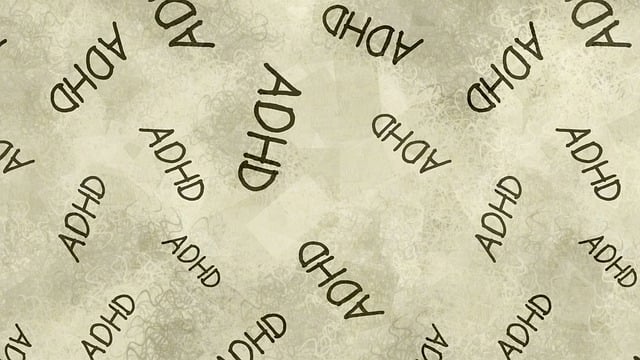Recognizing and preventing depression in children, especially those in bilingual households, requires a nuanced approach. Look for behavioral changes like persistent sadness or social withdrawal, as young individuals may struggle to express their feelings verbally. Bilingual therapy emerges as a powerful tool, addressing cultural barriers by using a child's native language to build trust and encourage emotional expression. This tailored approach boosts self-esteem and empowers children and families with coping mechanisms, fostering overall well-being and resilience against depression. Proactive measures, including community outreach and education, further strengthen support systems, ensuring a healthier mental landscape for young individuals.
Depression is a serious mental health issue that can affect individuals of all ages, but early intervention is key. This article explores comprehensive strategies for preventing depression, focusing on identifying signs in children, innovative therapy approaches like bilingual methods, and lifestyle adjustments. We delve into the significance of support systems, emphasizing family, school, and community engagement. By recognizing symptoms and implementing effective strategies, we can empower individuals to manage their mental well-being and foster a healthier future.
- Recognizing Depression in Children: Early Signs and Symptoms
- Bilingual Therapy Approaches for Depression Intervention
- Lifestyle Changes and Coping Mechanisms for Prevention
- Building Support Systems: Family, School, and Community Engagement
Recognizing Depression in Children: Early Signs and Symptoms

Recognizing depression in children can be a challenging yet crucial task for parents and caregivers. Children may struggle to express their feelings verbally, so it’s essential to look out for behavioral changes that could indicate underlying mental health issues. Early signs of depression in kids often manifest as persistent sadness, loss of interest in activities they once enjoyed, changes in appetite and sleep patterns, fatigue, difficulty concentrating, and social withdrawal. These symptoms can be subtle and may vary depending on the child’s age and cultural background, emphasizing the need for culturally sensitive mental healthcare practices that cater to bilingual communities.
Bilingual therapy for children offers a unique approach to addressing emotional regulation challenges. Therapists who specialize in this field understand the complexities of cultural nuances and language barriers, ensuring that interventions are tailored to meet each child’s specific needs. By incorporating strategies that promote mental wellness and foster open communication, these therapists can help young individuals navigate their emotions effectively. This personalized care is vital for preventing depression and supporting children’s overall well-being.
Bilingual Therapy Approaches for Depression Intervention

Bilingual therapy approaches have emerged as a powerful tool in depression intervention, especially for children and families who speak multiple languages at home. This therapeutic method recognizes the unique benefits of using a child’s native language as a means of communication, which can foster a deeper sense of comfort and trust. By incorporating the child’s first language, therapists create an inclusive environment that encourages self-expression and builds on existing cultural connections. Such an approach is particularly beneficial for children from diverse linguistic backgrounds, ensuring they receive culturally sensitive care tailored to their specific needs.
Additionally, bilingual therapy facilitates self-esteem improvement by empowering individuals to communicate their feelings and experiences in a language they feel most at ease with. This can significantly impact risk management planning for mental health professionals, as it enables them to gain a more nuanced understanding of the client’s emotional landscape. Furthermore, integrating self-care practices within these sessions promotes holistic well-being, encouraging children and families to embrace bilingualism as a tool for managing and preventing depressive symptoms.
Lifestyle Changes and Coping Mechanisms for Prevention

Depression prevention isn’t just about addressing symptoms; it involves proactive lifestyle changes and coping mechanisms. For children, especially those in bilingual households, integrating therapy can be a powerful tool. Bilingual therapy sessions cater to a child’s unique linguistic needs, fostering an environment where they feel comfortable expressing their emotions and thoughts freely. This approach not only enhances communication but also strengthens the bond between parents and children, as it encourages open dialogue about mental health.
In addition to therapy, promoting self-awareness exercises through community outreach programs can significantly contribute to prevention efforts. These programs often include activities that enhance mental health awareness, teaching children strategies to recognize and manage their emotions effectively. By integrating these practices into daily routines, families can create a supportive network, enabling children to develop healthy coping mechanisms and build resilience against depression.
Building Support Systems: Family, School, and Community Engagement

Building strong support systems is a cornerstone in preventing depression, especially for children and adolescents. Family plays a pivotal role by fostering open communication, offering unconditional love, and providing a safe haven where young individuals can express their feelings and concerns freely. School environments can also significantly impact mental health by promoting inclusive spaces that encourage self-care practices among students. Teachers and staff members who are trained in recognizing signs of depression and other mental health issues can initiate conversations about therapy for children, ensuring that no student slips through the cracks.
Community engagement is another vital aspect, as public awareness campaigns development can help destigmatize mental illness. Encouraging dialogue around self-care practices and mindfulness meditation, for instance, equips individuals with valuable tools to manage stress and maintain emotional well-being. By involving families, schools, and communities in proactive measures, we create a network of support that not only prevents depression but also fosters overall resilience among our youth.
Depression prevention is a multifaceted approach that involves early recognition, tailored therapy like bilingual interventions, lifestyle adjustments, and robust support systems. By understanding the unique challenges faced by children, implementing effective coping mechanisms, and fostering supportive environments at home, school, and within the community, we can significantly reduce the risk of depression. Bilingual therapy, in particular, offers a promising avenue for connecting with diverse populations, ensuring that all children receive the necessary care.














